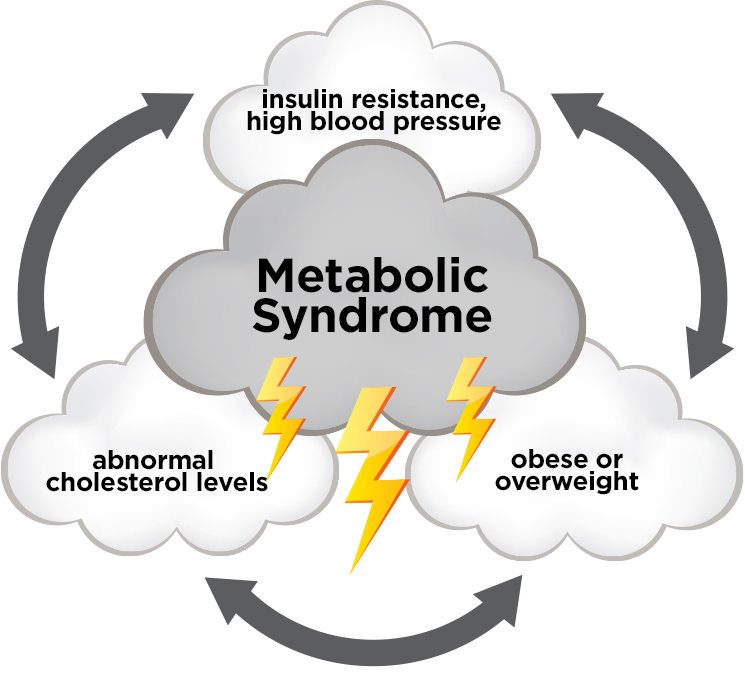
March 2015
Metabolic Syndrome: The Perfect Storm
(En español)

Metabolic syndrome has become increasingly common in the United States. Also called “pre-diabetes," this is a serious health condition that affects about 34 percent of adults.
The good news is that it easily can be modified and treated, so being screened for metabolic syndrome is an important step for ALL women in their middle years. We can detect problems in the early stages when the body isn’t using sugar properly, but before diabetes has developed.
The underlying causes of metabolic syndrome include being overweight or obese, physical inactivity and genetic factors.
If ignored, people with metabolic syndrome have an increased long-term risk of developing heart disease, type 2 diabetes, stroke, kidney disease, and poor blood supply to the legs.
However with modest weight loss and moderate physical activity, people with metabolic syndrome can delay or even PREVENT type 2 diabetes and lower their risk of heart disease and stroke.
What is meta bolic syndrome?
bolic syndrome?
Metabolic syndrome is a cluster of metabolic risk factors. A person who has these risk factors is at greater risk of developing cardiovascular problems in the future.
Why does metabolic syndrome occur?
Doctors are not sure whether the syndrome is due to one single cause. But ALL of the risks for the syndrome are related to obesity. The two most important risk factors for metabolic syndrome are:
- Excess body fat
Extra weight around the middle and upper parts of the body, known as central obesity. This body type may be described as "apple-shaped."
- Insulin resistance
Insulin is a hormone produced in the pancreas. It is needed to help move sugar from blood into cells where it is used. Insulin resistance means that some cells in the body use insulin less effectively and as a result, blood sugar levels rise.
Other risk factors include:
- Aging
- Genes that make you more likely to develop this condition
- Changes in male, female, and stress hormones
- Lack of physical activity
- Consuming a diet high in carbohydrates or getting more than 60 percent of your daily caloric intake from carbs
Other factors that may be linked with the condition include:
- Increased risk of blood clotting
- Increased levels of blood substances that are a sign of inflammation throughout the body
- Small amounts of a protein called albumin in the urine
How is metabolic syndrome diagnosed?
Metabolic syndrome occurs when a person has three or more of the following measurements:
- Central or abdominal obesity (measured by waist circumference):
Women greater than 35 inches (Men greater than 40 inches)
- Triglycerides greater than or equal to 150 milligrams per deciliter of blood (mg/dL) OR
You're on medicine to treat high triglycerides
- HDL cholesterol ("Good Cholesterol"):
Women less than 50 mg/dL (Men less than 40 mg/dL) OR
You're on medicine to treat low HDL cholesterol
- Blood pressure greater or equal to 130/85 (mmHg) OR
You're on medicine to treat high blood pressure
- Fasting glucose greater or equal to 100 (mg/dL) OR
You're on medicine to treat high blood sugar
These criteria were agreed upon by the International Diabetes Federation; National Heart, Lung, and Blood Institute; American Heart Association; World Heart Federation and the International Atherosclerosis Society.
Treating metabolic syndrome requires addressing several risk factors together, My Life Check ® provides a scoring tool and checklist with seven key heart-healthy targets for improving the quality and length of your life. Life's Simple 7™ will improve your overall cardiovascular health and greatly improve the individual risk factors that make up metabolic syndrome.
Go here to learn more about metabolic syndrome.
You have the opportunity to step in and change your destiny by taking ownership of your health and your future. DO IT TODAY.
Until next time!

